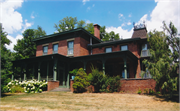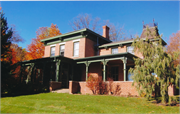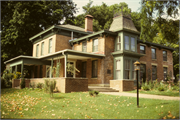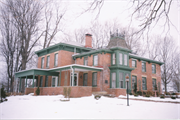| Additional Information: | A 'site file' exists for this property. It contains additional information such as correspondence, newspaper clippings, or historical information. It is a public record and may be viewed in person at the Wisconsin Historical Society, State Historic Preservation Office.
NHL.
Robert M. ("Fighting Bob") La Follette was one of the preeminent leaders of the national Progressive movement, working tirelessly to broaden citizen participation in government and to undermine the power of political machines, big businesses, and other special interests. A Republican, La Follette began his political career in 1881 as Dane County’s district attorney, before winning election to the U.S. House of Representatives.
In 1901, he became governor of Wisconsin. During his tenure, he put in motion a broad program of reforms, including direct primary elections for state offices, industrial regulation, a state civil service system, restrictions on woman and child labor, workmen's compensation, and a graduated income tax. This agenda drew heavily on a partnership with University of Wisconsin faculty, a model, known as the "Wisconsin Idea," for other states and the federal government.
In 1906, La Follette was elected to the U.S. Senate, where he became a leader of the Progressive bloc. In 1924, he broke with the increasingly conservative, pro-business Republican Party and ran unsuccessfully for president as an independent Progressive candidate.
Belle Case La Follette was a political activist in her own right. The first woman to graduate from the University of Wisconsin College of Law and gain admission to the bar, she campaigned for women’s suffrage and disarmament, causes she promoted in her "Home and Education" column in La Follette's Magazine. She edited the magazine after her husband’s death in 1925, renaming it The Progressive.
In 1905, the La Follettes moved into this residence, then part of a sixty-acre farm. The two-story brick Italianate house had been built in 1849 by Irish immigrant James Douglas McBride, Maple Bluff’s first settler. The house features a bracketed and denticulated cornice and a paneled frieze. The projecting tower with its mansard roof is consistent with the Italianate style, but it was added after the house was constructed. Over the course of three generations, the La Follette family added porches on the south and north and at the southeast entrance, and they altered the interior significantly. |
|---|





